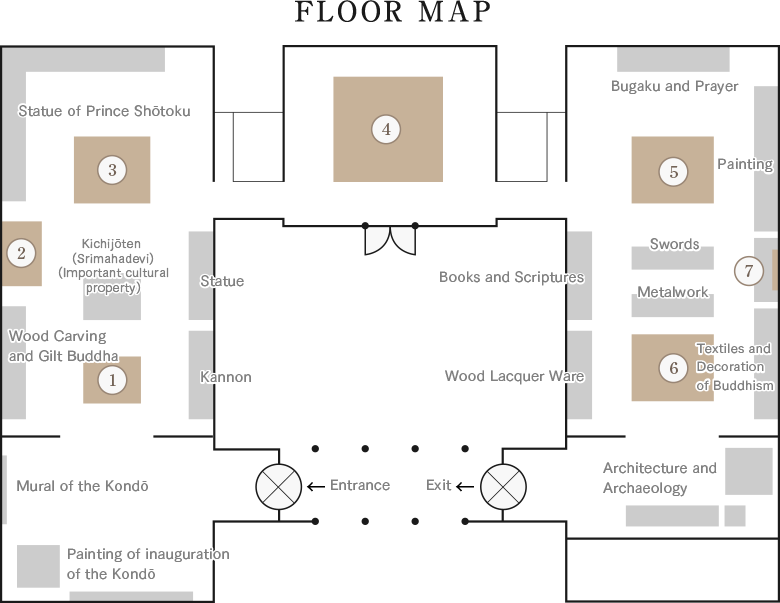-
Top

-
introduction

- Great Treasure Gallery
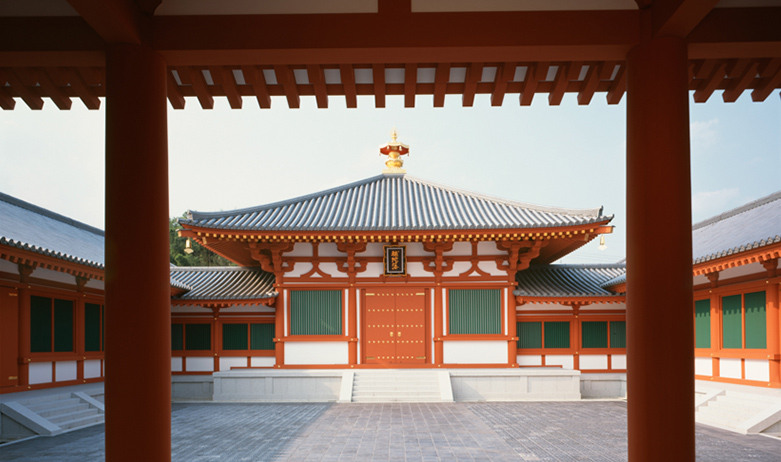
Great Treasure Gallery
The Great Treasure Gallery was built in 1998. The center of the building contains a hall which enshrines a statue of Kudara Kannon, and there are galleries to the east and west of the central hall. These two galleries house many important artifacts including a statue of Yumechigai Kannon, the Tamamushi no Zushi altar, the Lady Tachibana altar, and statues of Shotoku Taishi (574–622).
-
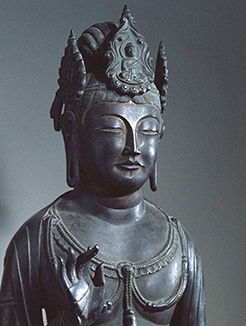
- ① Statue of Yumechigai Kannon
- Known as Yumechigai, or the “Dream-Changer,” this 86.9-centimeter tall bronze statue from the late Asuka period (593-710) was so named because this manifestation of Kannon is said to transform nightmares into pleasant dreams. Kannon, one of the most widely worshipped bodhisattvas in East Asia, bestows mercy and hope and chose to delay entry into Nirvana out of compassion for the suffering of others. Notice how the palm of the right hand faces forward. This is the Abhayamudra, a ritual gesture that represents fearlessness and protection.
-
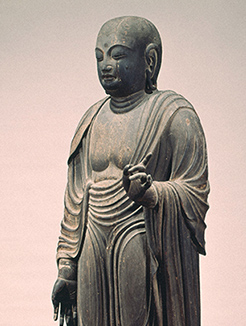
- ② Statue of Jizo
- Carved from a single block of cypress wood in the ninth century, this statue of Jizo was moved from Daigorinji Temple, which was associated with the Omiwa Shrine in Nara Prefecture, after the separation of Shinto and Buddhism during the early Meiji era (1868–1912). Widely revered in Japan, Jizo is a bodhisattva that often takes the form of a monk. Jizo embodies compassion and salvation and listens to the prayers of all who are suffering, and it is said he took a vow to instruct all beings during the time between the death of Shakyamuni, the historical Buddha, and the rise of Maitreya, the Buddha of the future.
-
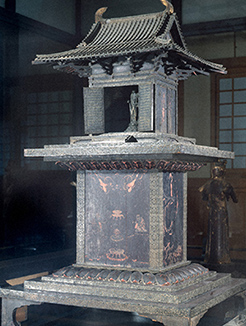
- ③ Tamamushi Tabernacle
- This small seventh-century altar-shrine, known as the Tamamushi no Zushi, is 226.6 centimeters tall and made of lacquered cypress and camphor wood. It is so named because tamamushi beetle wings cover the surface below the gilt bronze openwork metal fittings of the palace section.
-
According to temple records, the shrine was the personal possession of Empress Suiko (554–628). It is famous for its richly detailed Buddhist art. The doors are decorated with two of the four Buddhist Heavenly Kings (Shitenno) who guard the four cardinal directions. A total of four images of Buddhist bodhisattvas appear on the doors, with one image on each side of the doors to the left and right.
Though now difficult to make out, there are also episodes from the story of the Buddha’s previous lives depicted on the lower dais section. In one, he is hanging his clothes on a tree before jumping off a cliff to offer himself as sustenance to a starving tiger and her cub.
-
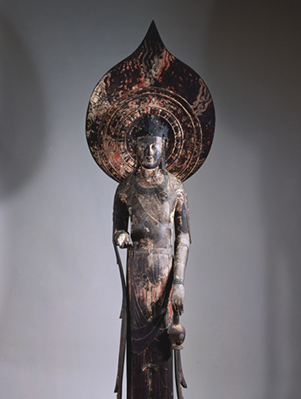
- ④ Statue of Kudara Kannon
- The Kudara Kannon is one of Horyuji Temple’s most famous treasures, attracting visitors from all over the world for its religious and artistic significance. The beautiful sculpture is made from one piece of camphor wood and is 209.4 centimeters tall. Research to date has not been able to establish when the statue was made. It first appears in Horyuji documents in the seventeenth century and it has been known as the “Kudara Kannon” since early twentieth century. According to the seventeenth century documents, the statue came to Japan from Kudara, the Japanese name for the Korean kingdom of Paekche (371–660). However, it is thought that the statue was made in Japan. A replica of the statue was made for the British Museum in the 1930s. The statue was featured in an exhibition at the Louvre Museum in Paris in 1997.
-
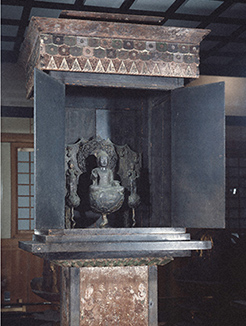
- ⑤ Lady Tachibana Shrine
- Lady Tachibana was the mother of Empress Komyo (701–760), who was the consort of Emperor Shomu (701–756), the 45th emperor of Japan. Lady Tachibana may have prayed before this wooden altar-shrine containing a remarkably detailed bronze Amida triad that dates back to the latter half of the seventh century and shows the influence of the early Tang Dynasty. The Amida triad consists of the Amida Buddha and two bodhisattvas seated on lotus flower thrones.
- The lotus flower is important in Buddhist iconography because it emerges from the mud at the bottom of a pond, but its flowers blossom on long stalks as if floating above murky waters, a metaphor for the earthly struggles with attachment and desire. It is because the world is full of such desires that the possibility of enlightenment exists.
- The shrine is decorated with images of bodhisattvas and Buddhist guardians called Kongorikishi, and the back side also depicts bodhisattvas who have just found peace in the Pure Land of Amida Buddha. The shrine displays the influence of other cultures. It is considered to represent a peak in the development of Far Eastern art.
-
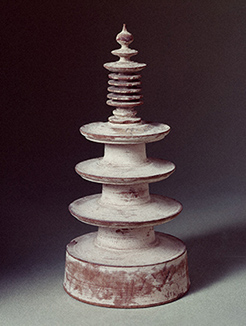
- ⑥ One Million Pagodas
- Empress Koken (718–770) commissioned craftsmen to print one million Buddhist dharani (incantations or paper prayer charms), and the creation of the same number of miniature wooden pagodas to store the scrolls. She did this in the hopes that political strife would decrease, peace would come to the land, and revolts would never erupt again. The entire project was finished by the time she passed away in 770. Empress Koken was the 46th monarch of Japan, reigning from 749 to 758. She abdicated once and ascended the throne again in 764 as Empress Shotoku, the 48th monarch, after her male cousin was deposed.
- The one million pagodas were distributed to ten temples around Nara, with one hundred thousand pagodas going to each one. The rolled-up scrolls are some of the oldest examples of printed paper in the world and are still contained inside the hollow pagodas beneath the removable decorative spires at the top. None of the miniature pagodas that were distributed to the other nine other temples have survived, but forty-six thousand of the one hundred thousand pagodas that were donated to Horyuji Temple have miraculously remained intact.

- ⑦ Murals in Main Hall
- The murals in the Main Hall are believed to date from the latter half of the seventh century and display Indian and Chinese influences. After miraculously surviving for over a thousand years, most of the murals were damaged in a disastrous fire in 1949. The damaged murals are preserved in the storehouse which was built in 1952.
